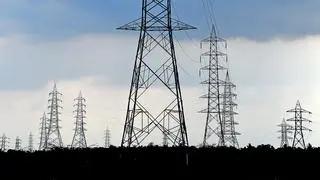After a stand-out performance in 2016-17, gas importer and regasifier Petronet LNG has continued to deliver strongly this fiscal year too. The company’s profit nearly doubled in 2016-17 to ₹1,706 crore and grew 23 per cent y-o-y in the half-year ended September 2017 to ₹1,026 crore.
In the recent September 2017 quarter, profit growth was 28 per cent. The good show has been driven by strong volume growth — up 26 per cent in 2016-17 and 15 per cent y-o-y in the half-year ended September 2017. Higher operating margins due to lower sourcing costs also boosted the bottom-line.
Keeping with the robust operating and financial performance, the Petronet stock has gone from strength to strength — more than doubling over the past two years. Since our recommendation in April this year, the stock has gained about 16 per cent.
Despite the rally, investors with a long-term perspective can buy the stock. At ₹251, it now trades at about 20 times its trailing 12-month earnings, only a tad higher than the average 19 times it has quoted at over the past three years. This is thanks to earnings growth keeping pace with the stock’s rise.
Favourable demand-supply supply dynamics for imported gas, prospects of continued volume growth with further expansion of the Dahej terminal in Gujarat and improving utilisation of the Kochi terminal in Kerala are key positives that should keep Petronet’s growth ticking over the next few years.
Besides, likely stakes in upcoming LNG terminals in the country, international expansion opportunities, and prospects of LNG as transportation fuel should help the company.
Volume growthPetronet’s strong volume growth over the past two years has been primarily due to the expansion in the mainstay Dahej terminal capacity from 10 mtpa to 15 mtpa.
Decline in global gas prices coupled with insufficient domestic supplies drove demand for imported gas.
Petronet LNG, as the country’s largest gas importer and regasifier, benefited significantly, with the Dahej terminal operating at more than 100 per cent capacity over extended periods.
The 5 mtpa Kochi terminal, hobbled for long due to pipeline connectivity troubles, has also shown gradual improving capacity utilisation — from single digits earlier to about 15 per cent — thanks to the headway made in laying pipelines.
Both Dahej and Kochi terminals are set for continued good growth in volumes. Capacity expansion at Dahej from 15 mtpa to 17.5 mtpa is expected to be complete by the end of 2018-19.
Also, utilisation at the Kochi terminal should increase from about 15 per cent now to 40 per cent from 2019-20 by when the Kochi-Mangalore terminal is expected to be commissioned. From losses in earlier years, the company is now making operating profit at the Kochi terminal, which should further improve to net profit as utilisation improves. While Petronet will face competition from new LNG terminals that are likely to be set up over the next few years, it should be able to hold its own and retain its position as the premier LNG player in the country.
One, natural gas is cleaner and cheaper than many competing fuels, and demand in the country far exceeds supply. This is expected to continue with economic development and the government’s thrust to encourage the use of gas.
Domestic gas supply, while it could pick up with new discoveries, is unlikely to increase at a rapid pace, due to low formula-based prices. So, import dependence, currently at about 40 per cent, is likely to increase in the coming years.
Expansion plansThe moderation in global gas prices over the past few years along with oil prices and the successful price renegotiation with major suppliers such as Qatar’s RasGas have cut imported gas costs and aided demand growth.
Next, Petronet’s business model has some inherent advantages. It has back-to-back take-or-pay contracts for its long-term gas supplies from the Dahej terminal; these make up the chunk of the company’s volumes.
Also, it gets a 5 per cent annual price escalation in regasification tariffs for its long-term supplies.
Besides, Petronet is seeking to expand its presence, nationally and abroad. While it is the dominant LNG player on the West Coast, the company is likely to make a foray on the under-served but high-potential East Coast too by picking stake in the 5 mtpa Ennore terminal near Chennai, being set up by Indian Oil. Petronet also has plans to expand operations globally by taking stakes in projects in Bangladesh and Sri Lanka.
The company also plans to launch LNG as a transportation fuel, with work underway in Kerala. If this takes off, it could further aid capacity utilisation at the Kochi terminal besides providing a new revenue stream.
Strong financialsReduced price realisations saw Petronet’s revenue decline about 9 per cent in 2016-17. But profitability improved sharply due to lower sourcing costs, operating efficiencies and the Dahej terminal operating above capacity. The operating margin increased from about 7 per cent in 2015-16 to almost 12 per cent in 2016-17.
This, along with decline in interest cost, resulted in net profit nearly doubling last year. In the half-year ended September 2017 too, the company’s operating margin remained healthy at about 13 per cent. Return on equity is good at over 20 per cent levels.
A strong balance sheet, low leverage (debt-to-equity of 0.23 times) and robust cash levels (about ₹500 crore) as of September 2017 — gives the company enough headroom to fund its expansion plans.








Comments
Comments have to be in English, and in full sentences. They cannot be abusive or personal. Please abide by our community guidelines for posting your comments.
We have migrated to a new commenting platform. If you are already a registered user of TheHindu Businessline and logged in, you may continue to engage with our articles. If you do not have an account please register and login to post comments. Users can access their older comments by logging into their accounts on Vuukle.